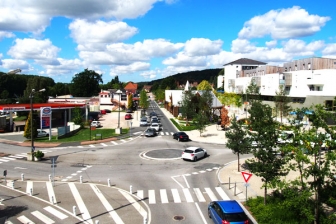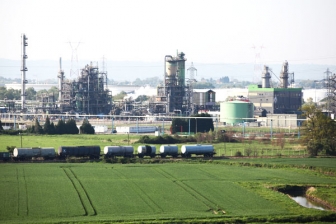Port-Jérôme-sur-Seine (FR)
The Synthetic Site Folder and Site Brief are available for free.
Please register and login to access the Complete Site Folder.
- Synthetic site folder EN | FR
- Site Brief EN | FR
- Site on Google Maps
- Back to map
Data
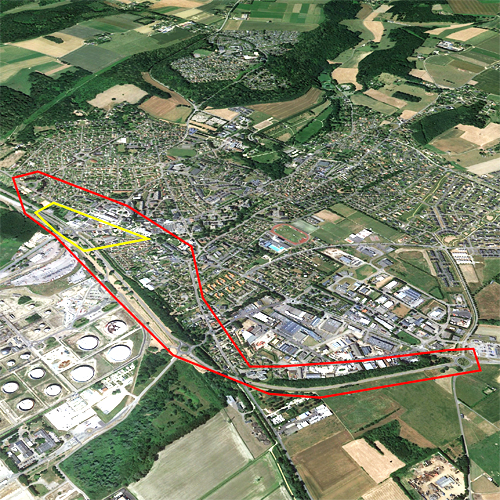
Project scale XL/S - territory / architecture + context
Location Port Jerome sur Seine – Notre Dame de Gravenchon
Population 10,000 inhabitants
Strategic site 73 ha - Project site 7.5 ha
Site proposed by City of Port Jerome sur Seine
Actors involved City of Port Jerome sur Seine, Caux Seine greater intercommunal area, Caux Seine development agency, SHEMA development corporation, EDF
Owner of the site City of Port Jerome sur Seine (90%), department, private owners
Commission after competition Urban development guidelines, conceptual diagram, specific architectural elements
Team representative Architect - urbanist - landscaper
More Information
How can the site contribute to a productive city?
Industry, developing in sectors, shaped the city. Two oil refineries were established along the Seine between 1928 and 1933 while the historic centre has remained higher up. A garden city with all the necessary facilities and services was built for employees, becoming a new place to live away from both the historic city centre and the industrial site. The city has changed, developing simultaneously with industrial opportunities and expansion. Today, recently merged into a dynamic intercommunal area of 80,000 inhabitants, the city is engaged in a process of ecological transition through energy production diversification. In view of these new challenges, how can the assets of this "fertile" city be promoted and how do these issues translate to the development project? How can living conditions and production at the entrance to the city be reconciled in a context of ecological and energy transition?
Municipal strategy
The city is carrying out projects in the centre that have placed man at the focal point of concerns. This has lead to a redefining of main traffic routes and encouraged the development of businesses, artisan and service activities as well as new housing. This work is restructuring the urban fabric and generating public spaces for activities with potentially drawing power. At a time of ecological and energy transition, the city and the intercommunal area are adhering to a territorial approach that aims for energy autonomy by 2040. The entrance to the city is a focal point where the industrial sector working towards more diversity and the city seeking more openness meet. This entrance should announce and define a fertile city that is both industrial and residential. The creation of a centre for expertise in hydrogen energy production is an opportunity to develop research, training and production. Economic development of national or even international level should be connected to the development of a city that respects individual living conditions.
Site definition
The strategic site includes a peripheral strip along the D81, the urban edge between the Kennedy and social and solidarity headquarters (PESS and PA) roundabouts. This departmental axis, by definition exclusively motorway and a corridor of vegetation that locks out any connection to the city or to the industrial sites, cuts the territory in two. The project site focuses on the entrance and the heart of the city beginning at the Kennedy roundabout. Ninety per cent of the site is communal, easily adaptable and has areas that need to be regenerated or recomposed. Part of the site is in a private development project. The gas station (2nd largest in France) will be transferred close to the Kennedy roundabout, thus freeing up its present site, which has rich potential. The Télhuet Creek, currently covered over, should be uncovered and given importance.
How is production inserted in the urban diversity programme?
The urban project should no longer turn its back on industry, but has to create a fruitful dialogue between environmentally friendly production and new ways of living by:
1- promoting the emergence of an economy that is socially oriented, supportive and circular and that translates into the design of innovative housing for all and includes businesses, shops and artisan workshops;
2- developing other types of production and services: personal services, (caretaking, catering, etc.), transport (car pooling, environmentally-friendly transport), business training (artisan campus, ceramic centre) that are an interface between workplace and city;
3- being attentive to the environment and living conditions through more planting that would help regulate the climate and increase short-cycle local production;
4- creating, in addition to industry, new tourist, cultural and educational attractions that enhance the image of the city and encourage one to take advantage of existing facilities in the city centre and that connect the city to the larger territory;
5- transforming the city into a lively centre, open to the outside world and fulfilling the inhabitants' expectations (meeting place for young people, public transport connections to major cities, etc.).
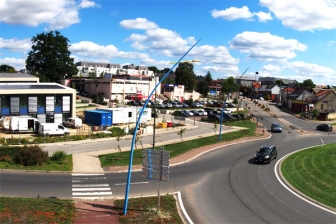 Kennedy neighbourhood
Kennedy neighbourhood
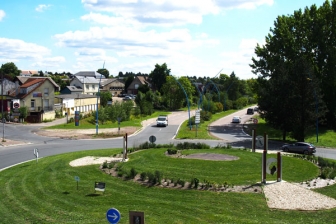 Road separating the city from the industry
Road separating the city from the industry
Questions on the site
Bonjour, Comptez-vous nous transmettre le site au format .dwg ? Merci, R.C.
Hello,
We have advised Port-Jerome of these missing files and will recover them. They will be soon available in the complete file.
best regards
Hello, would it be possible to obtain topographic, hydrological, afforestation, parcels... please? Thank you for your attention, cordially,
We made the request to the city of Port-Jérôme-sur-Seine. We will upload this file as soon as we receive it.
Would it also be possible to add Autocad map for the Study Site?
We made the request to the city of Port-Jérome. We will download this file as soon as we receive it.
This site is connected to the following theme
CHANGING METABOLISM CHANGING METABOLISM From linear to circular economy Characterized by a “linear”, obsolete or monofunctional economic approach, the site aspires to incorporate other resources and uses that create synergies and new potentials for interaction so that to create a circular system, catalysing flows and processes in a more integrative and efficient way.
From linear to circular economy
A new balance must be found between the relations, processes, flows and multiple forces of the sites that are large and contain a variety of agents (human and nonhuman) with long- and short-term cycles, and far-reaching ecological, economic and territorial implications.
Specific documents
Questions on the site
You have to be connected –and therefore registered– to be able to ask a question.
Fr. 16 May 2025
Deadline for submitting questions
Fr. 30 May 2025
Deadline for answers
Before submitting a question, make sure it does not already appear in the FAQ.
Please ask questions on sites in the Sites section.
Please ask questions on rules in the Rules section.
If your question does not receive any answer in 10 days, check the FAQ to make sure the answer does not appear under another label or email the secretariat concerned by the question (national secretariat for the sites, European secretariat for the rules).
